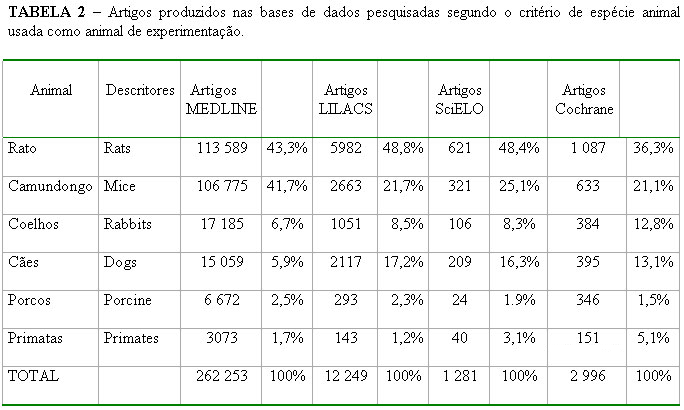PURPOSE: Delineate the parameters that directed the choice of an animal model of disease and to verify in the recent biomedical literature which the models of lives frequent uses. METHODS: The authors plows discussed, the concepts and the characteristics of an animal model of disease. Stands out the current consensus on when it use an animal model, which the criteria of choice and the requirements goes an appropriate model. Describes which plows the animal models available and it discusses the controversies of the phylogenetic similarity and the inherent risks the extrapolation of the models goes the human beings. Based on the document retrieval in the database of BIREME (Medline, Lilacs, Scielo and Cochrane Library) it investigates which the types of animal models mentioned in the articles of these databases lives. RESULTS: It is verified that the rats and the mice plows the animals frequently used lives. The rabbit, dog and the swine follow the list in the references of English language. In the databases of the Latin-American literature the dog overcomes the number of citations of rabbits and swine. The primates plows minority in the citations in all of the databases. The systematic revisions also have in the mice the largest number of citations, the other species plows mentioned in equality of conditions. CONCLUSIONS: Today, "animal model" plows used in virtually every fields of the biological research.The relationship between the humans and the animals of other species led, through the teams, live defined outlines, the exploration of other species have roll-neck and an established ethics, the induction of the results of animal the goes the human species have clear and objective criteria. The uses of the experimental models, or of the models animal of disease, or of the laboratory animals in the biomedical research allows and they should allow next years discussions in philosophical, politics, social, economical and religious fields.
Disease animal models; Rats; Mice; Dogs; Porcine; Primates; Surgery


